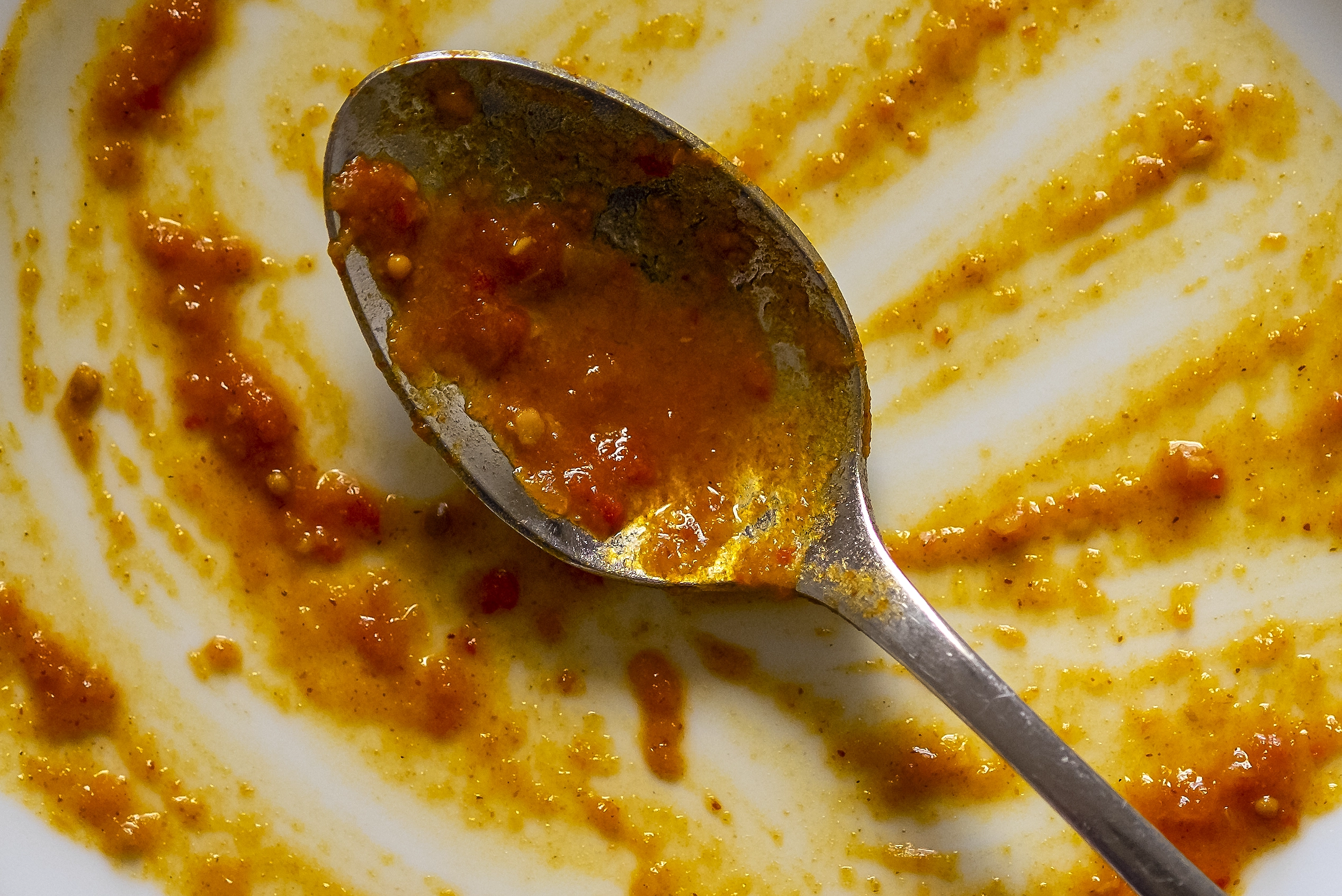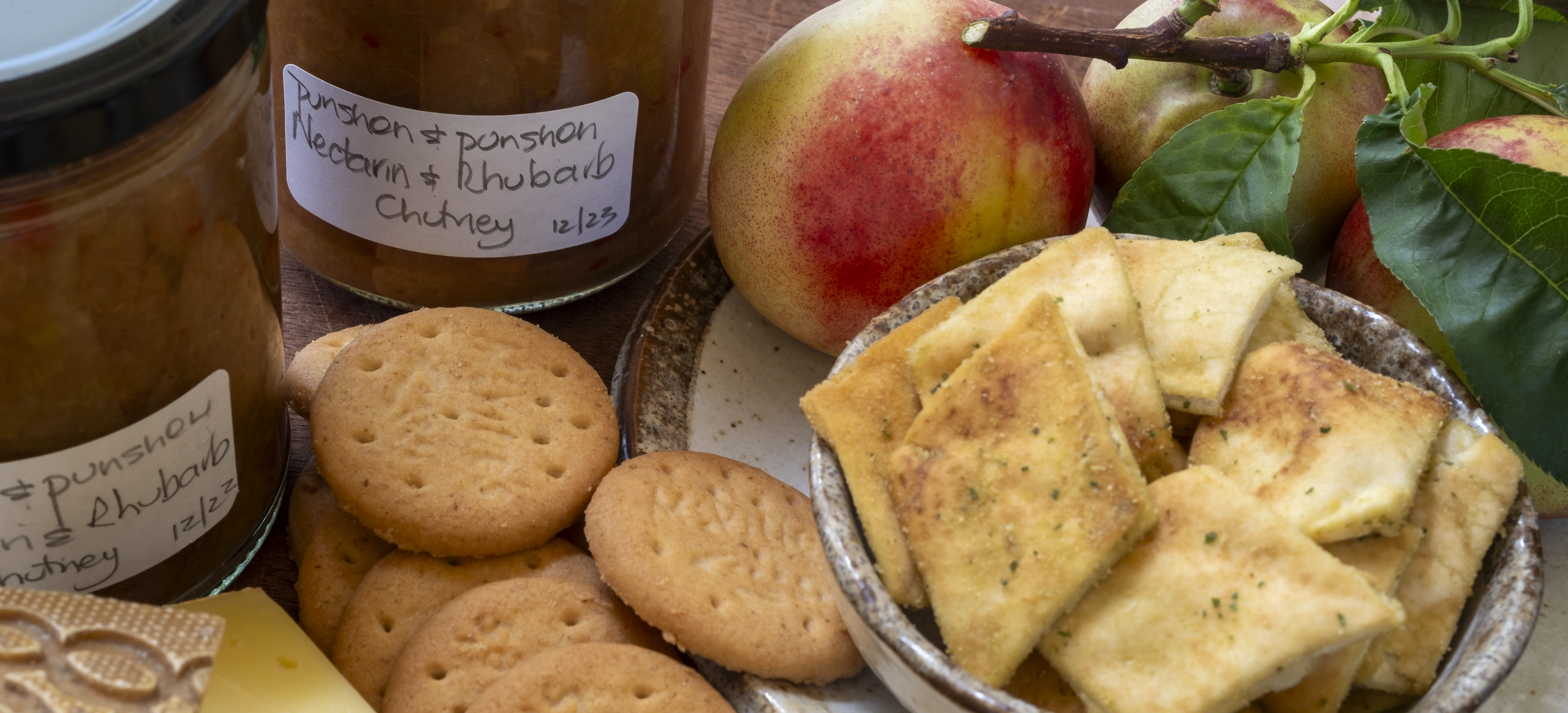
What's in a Name: Chutney or Relish?
- Reasons
- Technique
Late summer and autumn, when the kitchen gardens and orchards are at their peak, is the traditional time for making chutney, relish, pickles, and sauce. The produce, abundant and ripened by summer's warmth, beckons the preservers cauldron. Fruit, veggies, vinegar, sugar and an apothecarial array of herbs and spices form the foundation of chutney and relish.
These preserves are not the main act of the meal, but they can be the star.
Classified as a condiment they serve to complement, just like the fall-guy in a comedic act. They tickle the palette, stimulate the appetite, provide gusto and a contrasting element. They create a sense of anticipation and add excitement and pleasure to the table.

Autumn’s my favourite time of the year. Cooler days lure me to harvest the last of summer's bounty while Monarch butterflies and bees ride the winds of change. In the kitchen, I wash, chop, mix, cook, stir and jar-up another plentiful harvest. The pantry shelves groan with a rich cache flavoured with spices from around the world. Rarely does a day pass where at least one chutney, relish or sauce is not presented on our table. A sauce, a smooth melange, which pours readily from a bottle is easily described. But not so for the dynamic sibling duo, chutney and relish. Their description is more nuanced. The big wide Web world often gets them completely mixed up and the term is used interchangeably in recipes. Technically though, there is a difference that is little understood.
They share similarities, they have defining differences.
They are both made from almost any mixture of chopped fruit and veggies simmered in sweetened flavoured vinegar. The spices play an important role. They add variety and provide endless variations of hot, mild, fragrant, and exotic flavour profiles from cuisines across the globe. Making your own means you can vary the amount of spice to suit your taste. You can create your own culinary signature. Vinegar's acidity and the combination of natural and added sugar ensures a well-made chutney or relish will store safely in a dry, airy, cool darkish place until opened. Then, both should be stored in the fridge. Sterilised jars with acid-proof lids, to prevent the development of rust and contaminating the preserve, are a must!
So, what’s the difference?
It’s all in the cooking time and type and proportion of sugar and vinegar.
Relish is predominately made with white sugar and white or apple cider vinegar and in lower proportions to a chutney and they have a shorter cooking time. So, they retain a lighter, fresher, fruitier taste. The fruit and veg pieces are more defined; they have a more vibrant colour, and some styles can have a crunchy texture. Due to the lower sugar and vinegar content, they won't store as long and should be eaten within 12 months. When I think of relish, it’s piccalilli, golden corn, and sweet cucumber relish (the crunchy ones), blueberry, nectarine, and fig and fennel relish (the fruity ones) and the spicy red tomato relish (the palette tickler) that springs to mind.

The traditional, the fruity and the broody one's: each stamped with their own unique culinary story
Chutney on the other hand, is made with a variety of different sugars-white, light and dark brown and demerara. Different vinegars-malt, apple cider and red wine, sometimes white. They tend to have more complex spice mixtures and are cooked l-o-n-g and s-l-o-w. The ingredients are reduced to a tender pulp with a concentrated flavour and they have a thicker, richer, and more “jammified” consistency. When I think of chutney, the swag of tomato chutneys-traditional English red and green through to the spicy Indian kasundi family spring to mind. Then there’s the fruity ones, mango, plum, peach, apple and South African Taka Tali to name a few. The farmhouse styles-Yorkshire, Westmoreland and Devon-they’re the dark broody one’s.

The list is a never-ending story of preserving windfalls and the abundant harvests, of using ancient techniques to save food for tomorrow's delight and of the cook’s inspiration that binds them together. I salivate at the thought of the coconut and turmeric fish curry, surrounded by pappadums, naan, rice and a veggie dahl. Then the accoutrements, pear and eggplant kasundi, spicy green tomato chutney, fermented lime pickle and a soothing fresh cucumber and yoghurt riata that transform the meal into a feast. Dishes and joyous exclamations are exchanged around the table as the different flavours and combinations reveal their earthly pleasures.
Originally made as a fresh table condiment in India, chutney has a long history of trade, colonisation, and transformation
By the time of the British Raj, cooked varieties were immensely popular. On returning home, chutney, curry and the exotic flavours of the East accompanied the homeward bound travellers after their tour of duty. Recipes were further adapted to the English produce and the nation's milder spice and heat tolerance. They were enjoyed with great gusto and regional farmhouse and colonial specialities soon appeared wherever the British footprint lay. The traditional ones are still vogue and new combinations are evolving.

So what's in a name? It’s not a calamity whether they are ‘correctly’ labelled a chutney or a relish or not, they will always remain the darling flavour bomb pots that enrich our tables.
